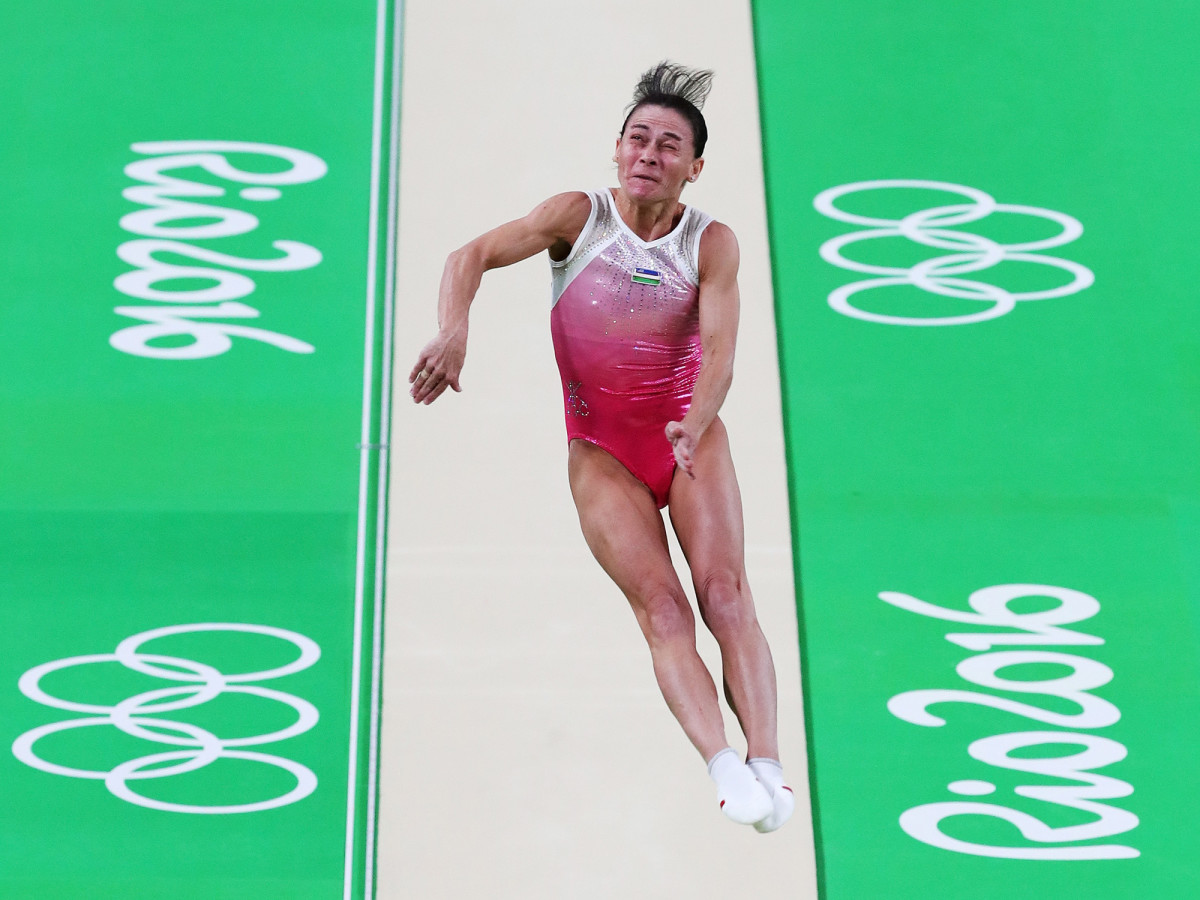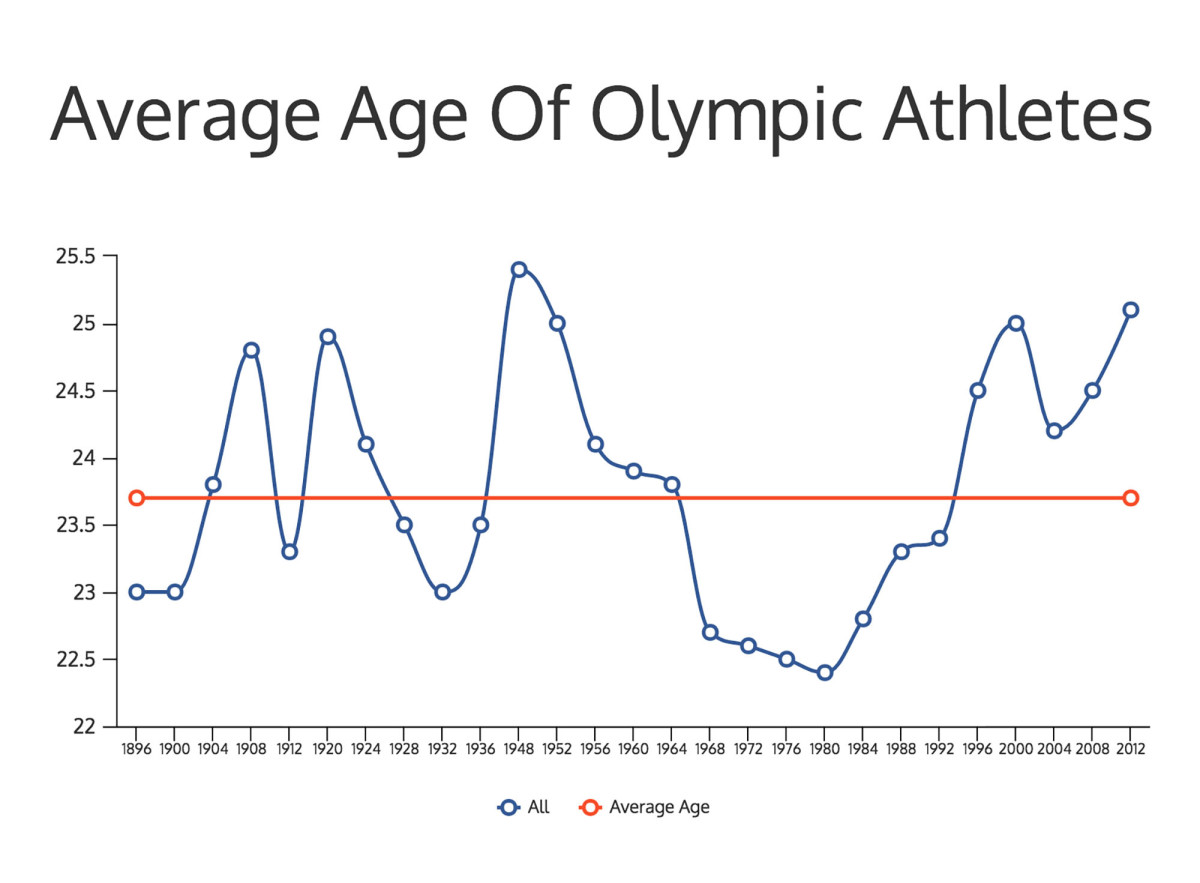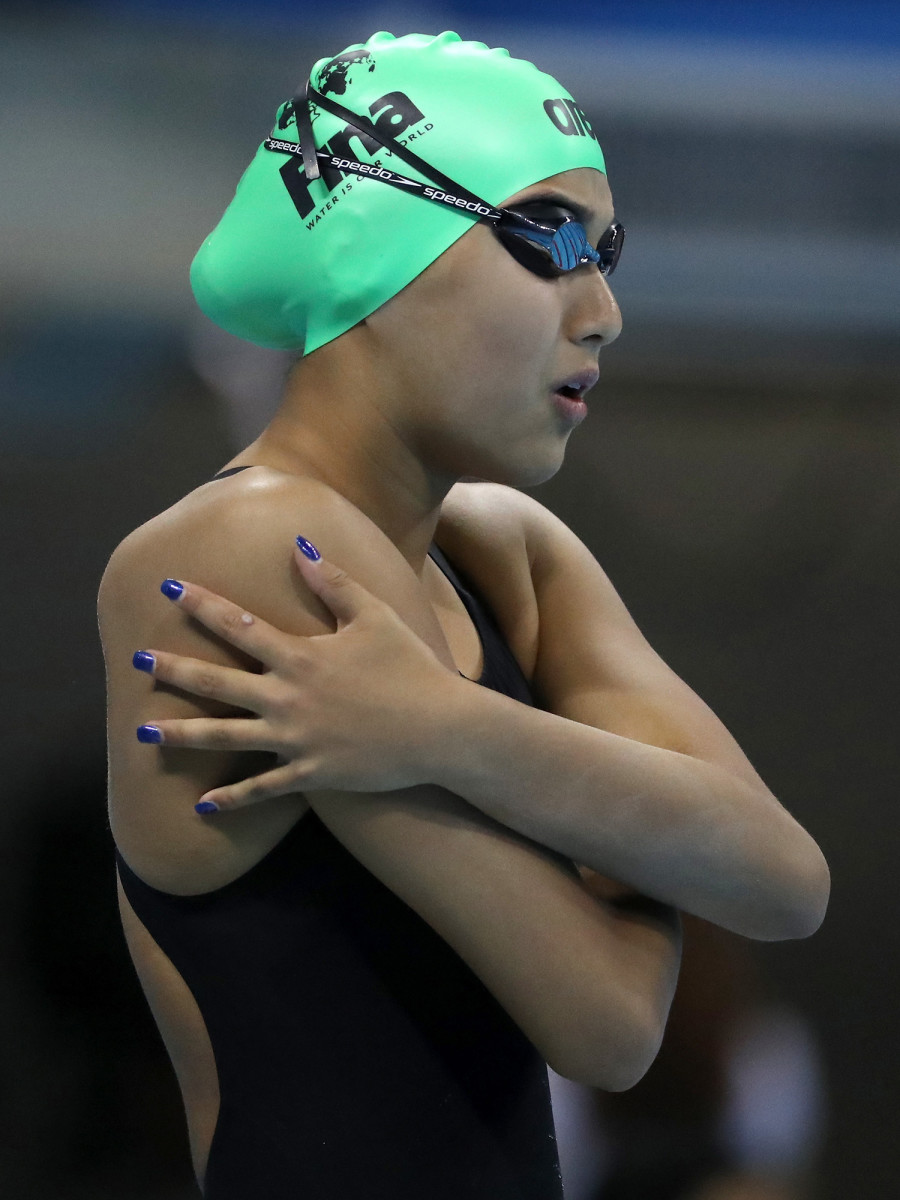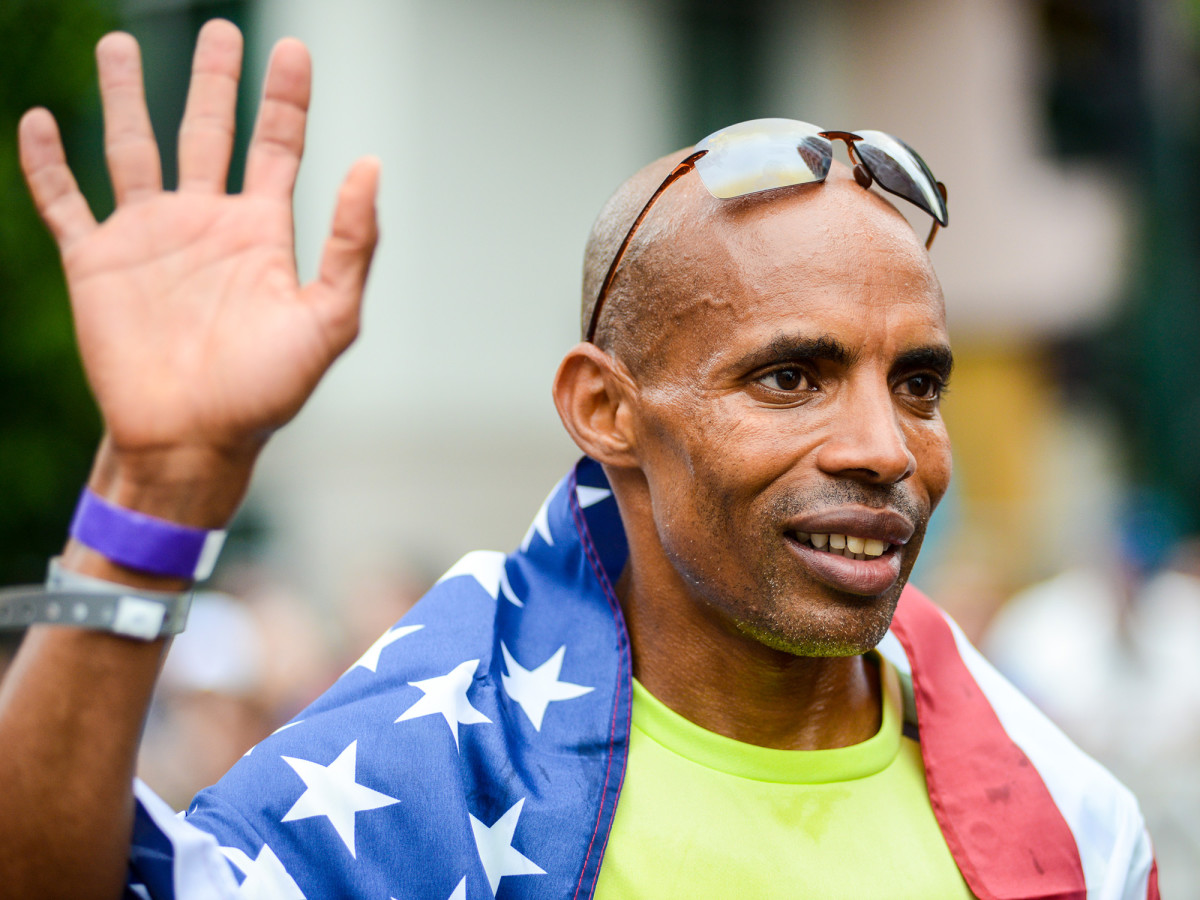The age of Olympians: Rio 2016 highlights younger, older athlete performances

The Olympics are all about competing on the world’s biggest stage, and one of the things the Games do every four years is highlight exceptional performances by younger and older athletes. Gymnast OksanaChusovitina, representing Uzbekistan, competed in her seventh Olympic games at age 41 in Rio this year. Other older athletes include U.S.’s MebKeflezighi, 41, Jo Pavey, 42, an English track and field athlete and Mary Hanna, 61, an Australian competing in equestrian. By contrast, Nepal’s Gaurika Singh, 13, competed in swimming as the young athlete at the Rio Games.
Could the design of the pool in Rio be fueling Olympic swimming records?
It is possible to combine the available data on the age of Olympians with individual examples to draw some conclusions about this topic, which is also a focus of a lot of the emails I have been getting throughout this first week of the Rio 2016 Olympics.

Older, faster, stronger?
The first question is what does the data tell us about the age of Olympians? I found a terrific analysis by Ryan McCready on this topic that looked at the age of over 5,000 medalists over the last 100-plus years. The graph below summarizes what he found. Remember, this is for medalists only. However, McCready found that for some sports such as track & field age was increasing while for others, such as gymnastics, it was going down.

What strikes me about this graph is the generally upward trend since 1980. This probably reflects two things: 1) Increased professionalism and longer careers in many sports that used to be strictly “amateur” and marked by retirements from completion by athletes in their early 20s or younger. A striking example of this comes from rowing where the average age of the finalists in the single sculls increased from 24 to 31 between 1976 and 2012! 2) More opportunities for women via policies like Title IX in the U.S. have allowed many women to participate in college and beyond. At age 19, Katie Ledecky is the youngest swimmer on the U.S. team at Rio 2016; in the 1960s and early 70s she would have been among the oldest women on the team. Debbie Meyer was 16 when she swept the 200-, 400-, and 800-meter freestyle events in Mexico City in 1968—Ledecky is looking to match Meyer’s record at this year’s Olympics—and then retired.

How young is young?
The next question came up in an e-mail conversation with David Epstein, author of The Sports Gene. David wondered, “Why do you think there are Olympic swimmers here and there at age 15 (Phelps got fifth, Ledecky won), and 16 who can compete, but you never see that in running at that level? Although Bolt, at 17, ran a 200 time that could've contended for a medal. But that's the only example I can think of.”
Katie Ledecky continues to lead U.S.’s medal charge in pool
The short answer is that swimming is a highly technical skill compared to running and perhaps more prone to prodigies on that basis. Swimmers also start with very intense interval training very young. In fact, miler Jim Ryun, who made the 1964 Olympic team at age 17, essentially trained like a swimmer, and did a lot of high volume interval training. So perhaps it has to do more with the sociology of those two sports than something inherent to the physiology. Training in the water is also easier on the joints and less likely to cause injuries like stress fractures.
How old is old?
The next question came from Nick Thompson an excellent recreational runner who has done the last couple of New York City marathons in the mid-2:40s. Thompson is the online editor at The New Yorker and he had questions about the physiology behind American marathoner Keflezighi, 41, and 41-year-old Bernard Lagat, who will be representing the U.S. in the 5,000-meter. Thompson wrote, “The fact that they are both 41 strikes me as extraordinary.” In response, I told Thompson that while its unusual, it is perhaps not so extraordinary. Ethiopian Mamo Wolde won a bronze medal in the 1972 Munich Olympic marathon at age 40. In that same race, Jack Foster from New Zealand, 40, placed eighth. Foster also competed four years later at age 44 in Montreal and placed 17th, and when he was 41 he won the silver at the Commonwealth Games with a time of 2:11:19.

From a physiological perspective, the trick for the older elite endurance athlete is to keep the intensity of their training up and at the same time avoid injury. Intensity is the key to make sure that the age-associated delay in maximum oxygen uptake is absolutely minimal. Recovery is also critical to avoid injury. Keflezighi is coached by Bob Larson, who is known for advocating easy recovery days and Lagat also takes time to recover and does modest overall mileage.
Distance races in the Olympics can be tactical and Lagat still has a very fast finishing kick—if he makes the finals and the pace is slow, he could medal. Olympic marathons are also run under less than ideal conditions and the courses are not always set up for a fast time, so it is conceivable the Keflezighi could medal as well—he leveraged tough conditions for a silver medal in 2004 at Athens and won the Boston Marathon in 2014.
How Michael Phelps's body has changed over his five Olympic Games
Both Keflezighi and Lagat have had ups and downs in their careers. In an earlier era they likely would have retired, but like many elite athletes who have done well in their later 30s and 40s they have weathered the ups and downs to comeback. This is almost certainly a result of the fact that neither has had a career-ending injury and because they have been able to make a living running.
What Satchel Paige knew
The legendary pitcher Satchel Paige, who arguably competed at a high level more often and longer than any other elite athlete, once asked “How old would you be if you didn’t know how old you are?” That question rings true for the 40-somethings going for medals in Rio, but it applies to the teenagers as well. Come to think of it, that is pretty good question for us all to ponder as we think about our next workout, competition, or life in general.
Michael Joyner is an expert in human performance at the Mayo Clinic, these views are his own. You can follow him on twitter @DrMJoyner.
